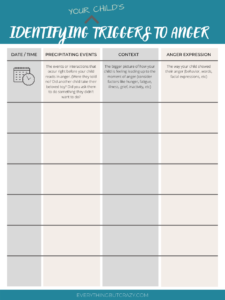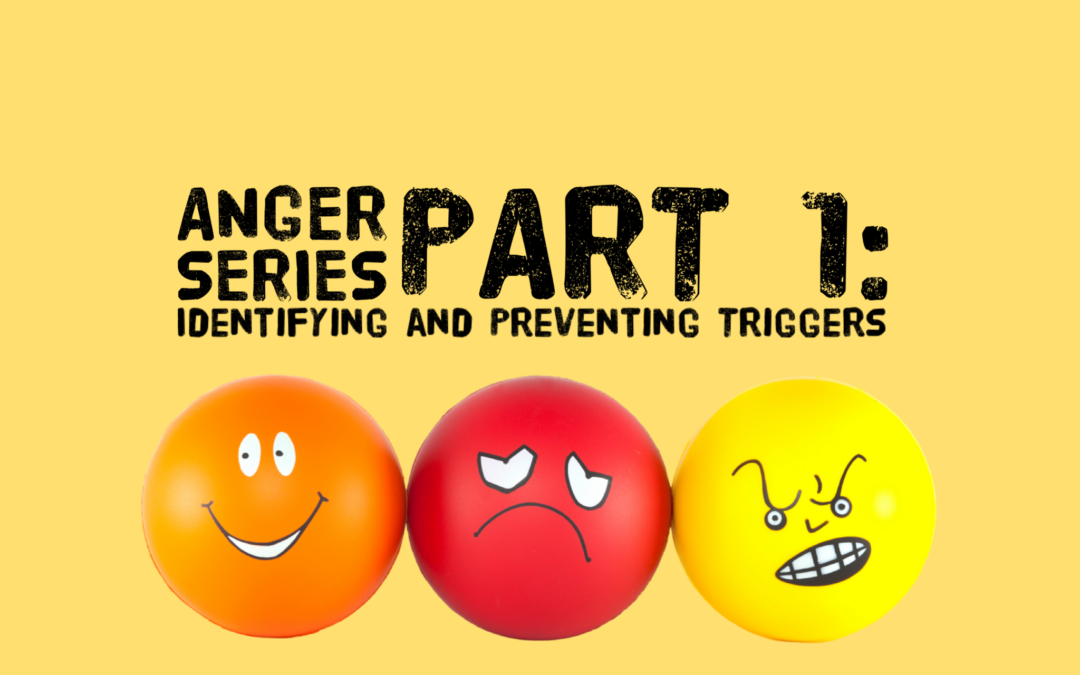Many parents struggle when confronted with their children’s feelings, but no issue seems to be so universally confounding as their children’s anger. It’s no wonder, given the high stakes of uncontrolled anger (i.e. aggression), which can lead to suspensions and expulsions from school, difficult peer relationships, and high-stress interactions at home. Clearly, anger is a behavior that requires parents’ attention, and most parents would love to find strategies to prevent that anger in their children.
If you’ve read this blog before, you won’t be surprised to hear me affirm the feeling of anger as valid. As with our other emotions, the feeling of anger exists to alert us to something requiring our attention. Maybe someone is taking advantage of us, maybe someone is ignoring our needs, or maybe someone is causing us pain. In each of these scenarios, our anger exists to spring us into action. It is good and healthy to self-advocate. And our anger can help us do that. We just need to learn how.
That’s where parents come in. Our job is to teach our children how to channel the adaptive emotion of anger into something that proactively helps them and avoids harming any others. The way I see it, this job comes down to two important categories: prevention and response.
I’m going to dive into the concept of prevention in this post, and will talk more about responding to your child’s anger separately, as these are both big subjects.

The whole idea of prevention is to do everything in your power to avoid unnecessary anger for your child. If you’re confused because I just got done saying anger is important and adaptive, let me explain.
Anger is an evolutionarily important signal that lends itself towards self-protection. Our adrenaline kicks in, our heart starts beating faster, and blood flow is redirected to our limbs (allowing us to quickly fight for our lives when we need to). But that doesn’t mean we should sign up for anger if we can help it.
Think about your own experience. Do you want to walk into situations that inspire anger? Do you enjoy feeling angry? Or would you rather find healthy ways to prevent a situation from escalating to anger?
Chances are, whenever possible, you’d prefer to prevent your anger. Because though anger is important and healthy, it doesn’t actually feel good to be angry. The same goes for your children. Though the frequency of their anger may suggest otherwise, they would much prefer joy and contentment.
So how do you help to prevent their anger?
IDENTIFYING AND PREVENTING TRIGGERS
The first step in preventing your child’s anger, unsurprisingly, is figuring out what leads to their anger. To do this, you will need to take on the role of detective for a bit, and that means paying attention. I fully recognize the burden of this “ask” for busy parents who are already juggling too much. But consider this time an investment into your child’s future as well as your own.
Each person has very different “buttons” that, when pushed, lead to anger. These buttons are sometimes created by past experiences, and sometimes temperament and personality. It is because of these unique differences that this paying attention step is so important. You need to know exactly what are the experiences that push your child’s buttons, as well as the intensity required to reach the level of anger.

This requires paying attention on two levels.
First, you need to pay attention to the present moment so that you can catch the events that lead up to the anger. What is the specific event or experience that leads your child to react in anger? Is it a sibling who will not share a beloved toy? Is it the frustration of having been told “no?” Is it the failed attempts to try and create a specific vision with their toys, only to find that the implementation of that vision did not go as desired? These are called the precipitating events.
To make this information useful in understanding how precipitating events affect your unique child, you will need to pay attention more than once. You need enough experience (i.e. enough data) to begin to identify patterns. We all have our moments when we over-react, but it becomes a pattern when we become angry at the same thing over and over again. It is these patterns that will allow you to begin to predict your child’s anger, which is a necessary step to prevention.
But in your detective work, you also need to pay attention to the larger context of how your child is feeling going into that specific moment. Did she wake up earlier than normal and is feeling tired? Is snack time overdue and he might be feeling hungry? Did she have a difficult day leading up to this moment, with many big emotions? Is he experiencing any pain or recovering from an illness that makes him more vulnerable than other times? Is he restless from not getting enough exercise earlier in the day? Has she been looking for your attention, but you’ve been preoccupied with other things? Is she mourning the absence of a friendship or a loved one? These things make up the context that surrounds your child.
I like to use the metaphor of a volcano to understand the importance of context. Imagine that each of us has a little volcano nestled inside of us. Whenever we encounter a negative experience during our day, we pour a little bit of lava inside. As with any container, there’s a finite amount of space inside that volcano. So the more lava we have inside due to hunger, fatigue, illness, or leftover emotions that were not dealt with, the less room we have to deal with the challenges in the present moment. Once that lava reaches the tip of the volcano, it doesn’t matter how small or insignificant the precipitating event might be, KABOOM! We still explode.
(Read more about one small thing we as adults can do to pour out some lava.)

The same explosion is likely to happen with our children when their volcano reaches capacity. And this leads us back to the importance of trying to understand the context surrounding them in any given moment.
To understand the context, you need to step back and look at the bigger picture of your child’s day, week, month, or even year. What are the things you can identify that might make her already have a pretty full emotional plate? Anything you identify in this “larger context” detective work is going to alter your child’s capacity for managing their anger, and reduce the threshold of intensity required to set them off.
[If you’re looking for help in organizing all of this information, I’ve created a free printable that will help you track your observations, just download the image below:

Once we understand our child’s context, we can begin to shift our expectations of them to better match their capabilities at that time. When our child’s context is primarily positive, we can challenge them to reach the outer limits of their potential, allowing them opportunities for growth.
But when their context contains elements that hamper them, we will want to reduce our expectations of them and acknowledge they have less available resources to respond well to what is asked of them. We will need to be more cautious in our expectations and closely monitor what their behavior is communicating to us, adjusting those expectations as necessary.
So this is step 1. I wish I could give you a uniform list of triggers that applied to all children everywhere and we could call it a day. But parenting isn’t a prescription; it’s an art form. It is only by combining our knowledge with our unique talents as parents that we create the spectacular works of art that are our children.
QUICK LINKS:
Anger Series Part 2: Building Your Child’s Emotional IQ
Anger Series Part 3: Responding to Your Child’s Anger
___
Dana Basu, PsyD is a licensed clinical psychologist at EverGROW therapy and founder of Everything But Crazy, an online resource for parents. She provides individual therapy, support groups, and online resources for parents in Orange County and throughout the state of California via online therapy. She specializes in working with the highly sensitive person and people with difficult childhood experiences, trauma, parenting stress, and chronic guilt.


